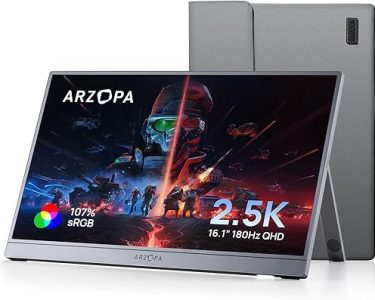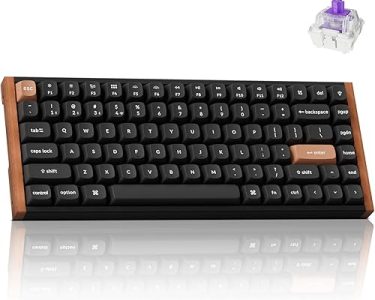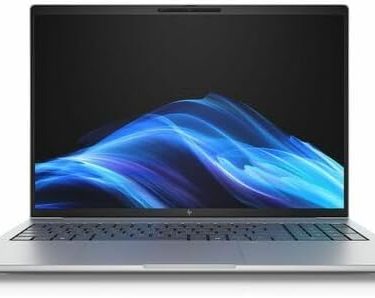Over the years, I’ve used a lot of Chromebooks, and most of them tend to be either really expensive and occasionally forgettable or extremely high-end with a corresponding price tag. The Lenovo Chromebook Plus 14 aims for a mid-range position. It features a new MediaTek chip with AI capabilities, an OLED display, and a smart yet subtle design.
To check if it truly stands up, I used it for work and play for a week, and I have some opinions. Let’s get started.
Specification
There are two versions of the Lenovo Chromebook Plus 14. The standard model has 12GB of RAM and a non-touch OLED display, while the upgraded variant (the one we reviewed) has 16GB of RAM and 256GB of storage. Both models come with the latest MediaTek Kompanio Ultra 910 CPU with UFS storage. It also adds support for touchscreens. The beginning price of $649 might seem high, but considering what you’re getting, it’s an excellent deal. For example, UFS storage is faster than eMMC, while the majority of Chromebooks only have 8GB of RAM. Wi-Fi 7 makes it future-proof as well.
The 14-inch 1920×1200 OLED touchscreen display, however, is the true highlight. You don’t see many laptops with OLED panels (touch or not) at this pricing.
- Number of model: 83MY0000US
- Immortalis-G925 GPU; MediaTek Kompanio Ultra 910 CPU
- 16GB of RAM and 256GB of UFS storage
- Display: 14-inch OLED touchscreen, 1920 x 1200, DCI-P3, 16:10
- Ports: 1 audio jack, 2 USB 3.2 Gen1 Type-C, and 1 USB 3.2 Gen1 Type-A
- Wi-Fi 7 for networking
- Measurements: 12.37 by 8.63 by 0.62
- 2.78 pounds in weight
- Cost: $649
Exclusive new ChromeOS AI features
I had to test out the new ChromeOS AI features because the Lenovo Chromebook Plus 14 is the first Chromebook with a processor featuring an NPU. Nevertheless, I started with Live Captions and concentrated on things that I would utilize. This feature was useful to me during a meeting I was facilitating, particularly when the noise from the landscapers outside my window occasionally overpowered the conversations of my coworkers due to the loudness of their leaf blowers. I was able to stay focused and avoid missing anything crucial because the text appeared on the screen in real time.
Smart Grouping, which arranges your tabs and programs on a virtual desktop, is another feature I tested. Once more, this is among the more beneficial aspects of AI. The goal is to minimize visual clutter so you don’t have to search for a tab you can’t find or drag items around. To be honest, having an invisible helper to tidy up my open tab mess was sort of wonderful.
The Caps Lock key is replaced by the Quick Insert button, which opens a tool that allows you to put AI-generated graphics into any task you’re working on. Additionally, it provides writing tips, so you may use this tool to reduce sentences or sound more academic. I experimented with it a little, but it wasn’t useful for my daily tasks. Most of the features felt more like extras than necessities; however, local AI is a neat touch.
Connectivity
The laptop’s USB-C connectors on the Ethernet side are a hot issue at bestcomputerfinder, so I’m really happy about that. Both of them allow charging, which ought to be the norm at all times. Lenovo also included USB-A, which is amazing considering how small and light this device is—it weighs only 2.78 pounds! Though this is adequate for a daily machine, I usually prefer to have more port variety.
Performance
One of the first Chromebooks that uses MediaTek’s new Kompanio Ultra chip is the Lenovo Chromebook Plus 14. It can operate without the requirement for fans because it is based on Arm’s effective design. Ray tracing is supported by an 11-core Immortalis-G925 GPU and an 8-core CPU with high-performance Cortex-X929 cores. Additionally, it has a Neural Processing Unit (NPU) that delivers 50 TOPS of AI power, which is the key to unlocking the unique AI features I discussed before.
I had high expectations for the Lenovo Chromebook Plus 14, but they weren’t unreasonable. Fortunately, it handled them quite well. The Lenovo Chromebook Plus 14 received a score of 199 on the CrXPRT benchmark, which gauges how quickly a computer can complete daily chores. Compared to the Asus Chromebook Plus CX34, which has an Intel Core i5-13335U processor and is presently our top choice for Chromebooks, that is roughly 17% quicker.
Compared to the Lenovo Chromebook Duet, which has an outdated MediaTek Kompanio 838 processor, it is significantly speedier, in my opinion. The Duet’s score of 502.99, a benchmark that gauges overall web performance, is completely surpassed by the Basemark Web 3.0 score of 1,151. This indicates that it is over twice as quick as the Duet. That represents a significant performance difference between the two chips.
Battery life
Using the CrXPRT 2 battery benchmark, I measured the Chromebook Plus 14’s battery life and found it to be 19 hours, compared to Lenovo’s stated 17 hours. That’s an amazing outcome that is consistent with other Arm-based devices. That was with the screen brightness reduced, to be fair. You’ll probably see a little less if you turn the brightness up to the maximum, but that’s to be anticipated because brightness always affects battery life. I never felt the need to run for an outlet stat when I was using it unplugged.
Conclusion
I can state with confidence that the Lenovo Chromebook Plus 14 is among the greatest Chromebooks I’ve ever used after using it for a week. It has a beautiful design, is quick, and has an OLED screen? I’m still in awe of how amazing it looks, especially for a tablet that costs less than $700. Additionally, the battery lasts a very long time—it simply keeps running. Yes, the little function keys require some getting used to, and the AI capabilities are more nice-to-have than necessary, but those are minor annoyances in an otherwise fantastic product.
Lenovo dominated. Performance, display, and battery life are all heavily emphasized with this Chromebook. Additionally, it feels fantastic to use every day. This Chromebook ought to be at the top of your list if you’re looking to buy one. Up top, that Editors’ Choice badge? It’s earned.





